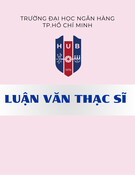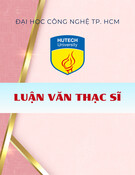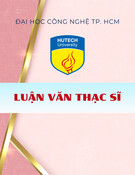
iii
PUBLICATIONS OF THE RESEARCH
1. Nghia, H.T., & Trang, N.T.M. (2019). The impact of shopping values on impulse
buying: The duality approach. Proceedings of the International conference on
Business and Finance 2019 - Accounting, Business and Management (ICBF2019),
74-89, ISBN: 978-604-922-764.
2. Nghia, H.T., Olsen, S.V., & Trang, N.T.M. (2020). Shopping value, trust, and
online shopping well-being: A duality approach. Marketing Intelligence & Planning,
38(5), 545-558. https://doi.org/10.1108/MIP-08-2019-0411.
3. Nghia, H.T., Olsen, S.O., & Trang, N.T.M. (2021). A dual process on shopping
well-being across shopping contexts: the role of shopping values and impulse
buying. Asia Pacific Journal of Marketing and Logistics, Vol. ahead-of-print No.
ahead-of-print. https://doi.org/10.1108/APJML-09-2020-0668
LIST OF FIGURES AND TABLES
Figure 2.1: Overall conceptual model ...................................................................... 6
Figure 2.2: Research models of study 1 and study 2 ................................................ 6
Figure 3.1: Research model of study 1 ..................................................................... 7
Figure 4.1: Research model of study 2 ..................................................................... 9
Table 3.1: Structural paths........................................................................................ 8
Table 4.1: Structural equation model results .......................................................... 11
Table 4.2: Offline vs Online differences ................................................................ 12
TABLE OF CONTENTS
Abstract ................................................................................................................... ii
Publication of the research ..................................................................................... iii
List of figures and tables ........................................................................................ iii
Table of contents .................................................................................................... iii
CHAPTER 1 - INTRODUCTION ....................................................................... 1
1.1. Research problems ......................................................................................... 1































